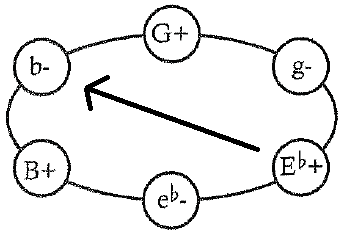|
I discovered the late-night radio talk show Loveline, with Adam Carolla and Dr. Drew Pinsky, just before Christmas 1999. I was in eighth grade and starting to assert personal independence. With the benefit of hindsight, it's difficult to overestimate how important that discovery was because hearing frank and explicit discussion of sexual matters helped me realize, understand, and accept my own maturation process, both physical and mental. I suspect I'd be a very different person today had I not randomly encountered that broadcast while scanning the radio dial that night. Like many adolescents, I used musical preference as a way to establish an identity, or at least the beginnings of an adult identify. I suspect many of a certain age connect The Beatles with this process, one major reason they're still so popular a half-century later. And Loveline would frequently feature guests, including many pop bands who were promoting their recent records. One night, I turned on the radio and heard for the first time a band called Stone Temple Pilots. They played a song called 'Sour Girl' from their 1999 album No. 4, which immediately captivated my 14-year-old ears. Fast forward 19 years, and I've forgotten about 'Sour Girl' - but not about Loveline. A while back, I discovered the website www.lovelinetapes.com, which contains exhaustive archives of Loveline shows. In a nostalgic bid, I decided to listen to the entire archive in chronological order. And the other night I stumbled upon that same broadcast with STP that I heard two decades ago, including its performance of 'Sour Girl' (and now I even know the exact date: 10 May 2000). This time, my musically-trained 33-year-old ears heard all sorts of new and fascinating musical subtleties that my eighth-grade ears were too inexperienced to notice. And so I set out to analyze it. Here's a transcription:
One of the first things I noticed was the change in key between the verse and chorus. The former seems to be in D major while the latter is in C major. What particularly captures my current attention is Robert DeLeo's bass line, which, by often playing the third and fifth of the tonic D major chord, constantly undermines any authoritative tonal conclusions about the verse. This is an example of what Mark Spicer calls a "fragile tonic", in which “the tonic chord is present but its hierarchical status is weakened." DeLeo's bass line is also what determines the BbMM7 chord (bVI in D) that appears near the end of each verse, differentiating that particular progression from the D minor chord that appears earlier in the same location. By altering the bass line, DeLeo also alters the progression, changing things up to keep a listener engaged. Even more fascinating is the harmony. That BbMM7 chord in the verses foreshadows the Bb that initiates the chorus. This time, however, because of the key change to C major, Bb is now bVII instead of bVI. While Bb moves to F in both the verse (bVI-bIII) and chorus (bVII-IV), in the verses that F proceeds to G (IV), while in the chorus it resolves to C (I). It's a great example of what I call "multifunctional harmony", where the same chords can function in different ways, even within the same song. Lastly, and most important, the harmony is also heavily chromatic. The intro riff and chords employ 10 of the 12 tones (only C# and G# are absent). While the progressions from F-C and C-G are extremely common, the move from Eb major to B minor is striking and most unusual. This is what Richard Cohn calls a "hexatonic pole" because it jumps across the hextonic cycle - in other words, it's as far away as you can get and still be in the same hexatonic cycle (Cohn, p. 18). Hexatonic poles are exceedingly rare in pop music - I cannot think of any examples. The closest I can think of is The Beatles' 'Michelle', which uses a similar but not identical progression from Eb6 (Eb-G-Bb-C) to B°7 (B-D-F-Ab). So 'Sour Girl' is, at least to my knowledge, the first pop song to employ a hexatonic pole.
REFERENCES Cohn, Richard. 2012. Audacious Euphony. Oxford University Press.
6 Comments
|
Aaron Krerowicz, pop music scholarAn informal but highly analytic study of popular music. Archives
August 2019
Categories
All
|
||||||

 RSS Feed
RSS Feed
